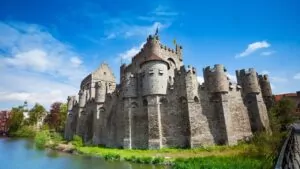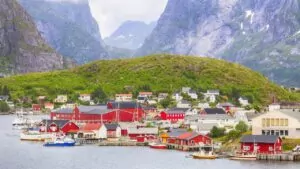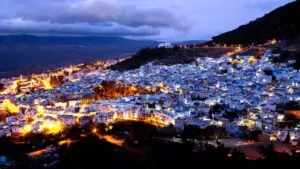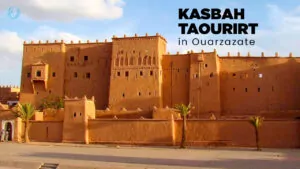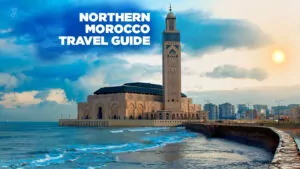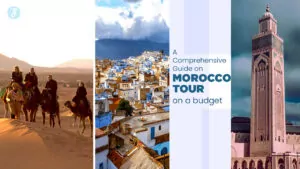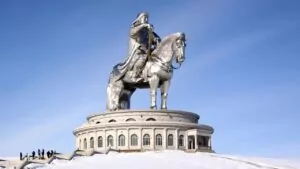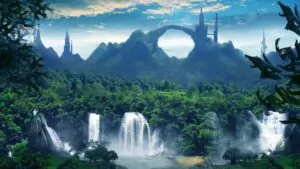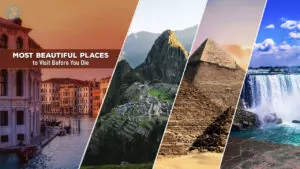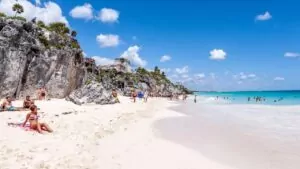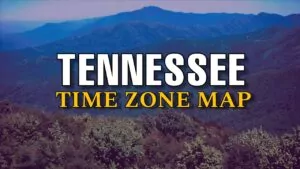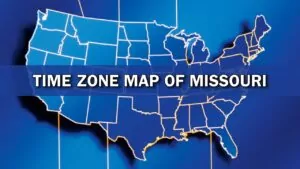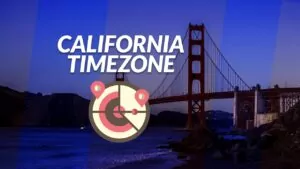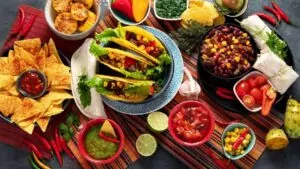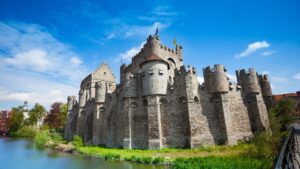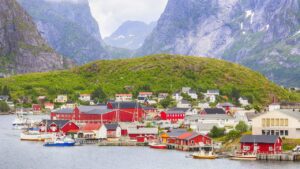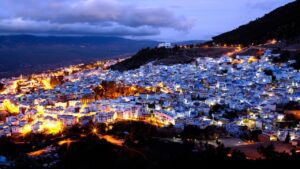Why travel to Morocco? This question is at the heart of every adventurer, culture seeker, and wanderlust-driven soul looking for their next unforgettable journey. Morocco, a vibrant crossroads of Africa, Europe, and the Middle East, is where ancient medinas hum with life, the Sahara’s golden dunes beckon, and the Atlas Mountains rise majestically above bustling cities.
In 2024, Morocco welcomed a record 17.4 million tourists, a testament to its allure as Africa’s most visited country. With its blend of tradition and innovation, Morocco offers a tapestry of experiences: from UNESCO-listed cities and world-class cuisine to wild landscapes and immersive cultural encounters. This comprehensive guide will answer every aspect of why travel to Morocco should be at the top of your travel list, providing all the details you need for an extraordinary adventure.
Morocco’s Tourism Boom: Record Numbers and Global Appeal
The Phenomenon: Morocco’s Unprecedented Growth in Tourism
Morocco’s tourism sector is booming. In 2024, the country saw a 20% increase in international visitors, reaching 17.4 million arrivals—its highest ever. This surge is driven by Morocco’s reputation for safety, stability, and its diverse offerings that appeal to every type of traveler. Tourism revenue soared to $11.1 billion, supporting over 7% of the nation’s GDP and creating hundreds of thousands of jobs. The government’s strategic investments in infrastructure, digital innovation, and sustainable tourism have paid off, making Morocco a four-season destination with a robust future.
Key Tourism Statistics
| Year | Tourist Arrivals | % Change | Tourism Revenue (USD) |
| 2023 | 14.4 million | — | $10.5 billion |
| 2024 | 17.4 million | +20% | $11.1 billion |
| 2025 (Jan) | 1.2 million (monthly) | +27% YoY | — |
Source: Morocco Ministry of Tourism, UN Tourism, Morocco World News
Essential Travel Planning: How to Prepare for Your Moroccan Adventure
Best Time to Visit Morocco
Morocco offers something unique in every season:
- Spring (March–May): Pleasant temperatures and blooming landscapes.
- Fall (September–November): Mild weather and fewer crowds.
- Winter (December–February): Ideal for mountain adventures and desert excursions.
- Summer (June–August): Perfect for coastal escapes and beach resorts.
Entry Requirements and Travel Documents
To ensure a smooth journey, travelers should prepare the following:
| Document | Requirement |
| Passport | Valid for at least 6 months beyond travel dates |
| Visa | Not required for many nationalities (up to 90 days) |
| Travel Insurance | Strongly recommended, especially with medical coverage |
Getting Around Morocco
Morocco’s modern infrastructure makes travel easy and flexible:
- Trains: Efficient network linking major cities.
- Buses: Affordable, covering intercity and rural routes.
- Rental Cars: Best for exploring remote areas and the desert.
- Domestic Flights: Fast connections between distant regions.
Top Destinations: Where to Go and What to See in Morocco
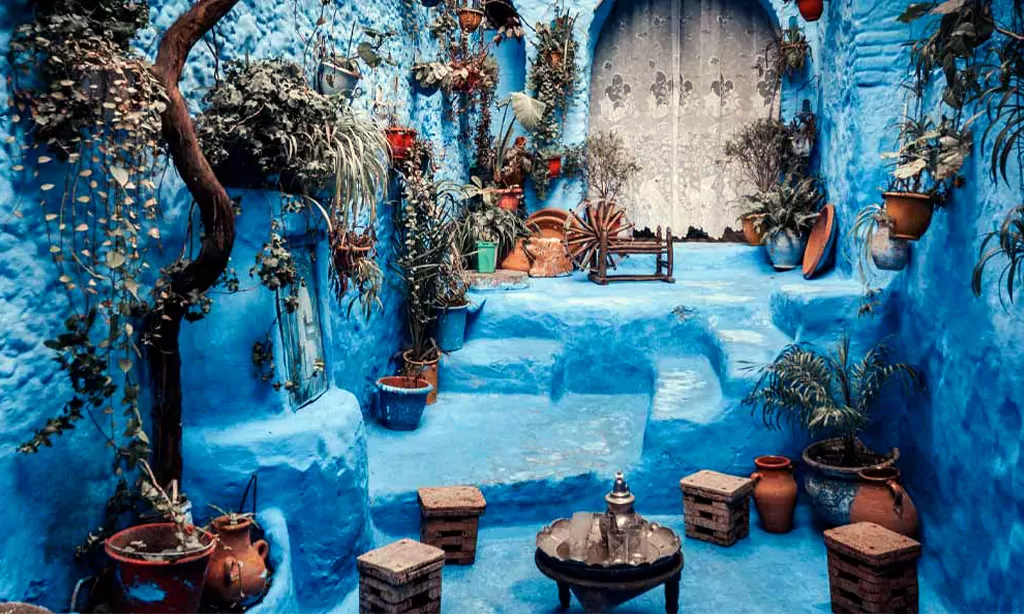
The Imperial Cities: Heart of Morocco’s Heritage
Morocco’s four imperial cities—Fez, Marrakesh, Meknes, and Rabat—are living museums of Islamic, Berber, and European influences.
Marrakesh
- Jemaa el-Fnaa: The city’s pulsating main square, alive with street performers, food stalls, and storytellers.
- Medina: A UNESCO World Heritage site, famous for its labyrinthine souks and vibrant atmosphere.
- Jardin Majorelle: An oasis of botanical beauty and art, once owned by Yves Saint Laurent.
- Bahia Palace: A masterpiece of Moroccan architecture, with stunning mosaics and gardens.
Fez
- Fes el-Bali: The world’s largest car-free urban area, a UNESCO site filled with medieval wonders.
- Al Quaraouiyine University: The oldest continuously operating university in the world.
- Bou Inania Madrasa: A marvel of Islamic architecture and intricate tilework.
Meknes
- Historic City: Spanish-Moorish influence, grand gates, and royal stables.
- Nearby Volubilis: Ancient Roman ruins, another UNESCO World Heritage site.
Rabat
- Modern Capital: Blends historic medina, French colonial architecture, and the impressive Hassan Tower.
The Blue Pearl: Chefchaouen
- Famous for its blue-painted streets, mountain views, and relaxed vibe.
- Ideal for photography, shopping local crafts, and immersing in Berber culture.
Casablanca: Morocco’s Modern Face
- Hassan II Mosque: One of the world’s largest mosques, with a retractable roof and oceanfront setting.
- Vibrant nightlife, shopping, and art deco architecture.
Coastal Gems: Essaouira, Agadir, and Beyond
- Essaouira: UNESCO-listed medina, historic ramparts, and a haven for windsurfing and seafood lovers.
- Agadir: Morocco’s premier beach resort, with golden sands and modern amenities.
- Taghazout: World-renowned surf destination with a laid-back atmosphere.
The Sahara and Desert Adventures
- Merzouga: Gateway to the Erg Chebbi dunes, camel treks, and luxury desert camps.
- Agafay Desert: Rocky, lunar landscapes just outside Marrakesh, ideal for glamping and stargazing.
The Atlas Mountains
- Trekking: From easy walks to challenging hikes, the Atlas offers breathtaking scenery and Berber villages.
- Eco-lodges and adventure sports: Canyoning, mountain biking, and winter skiing.
Hidden Treasures
- Ouarzazate and Ait Benhaddou: Film location for movies like “Gladiator” and “Game of Thrones,” with a UNESCO-listed ksar.
- Tétouan and El Jadida: Spanish and Portuguese heritage, unique medinas, and annual festivals.
Unforgettable Experiences: Why Travel to Morocco Offers More Than Sights
Immersive Cultural Encounters
- Traditional Hammams: Experience ancient bathing rituals for body and soul.
- Artisan Workshops: Learn pottery, carpet weaving, or metalwork from local masters.
- Cooking Classes: Discover the secrets of Moroccan cuisine, from tagine to mint tea.
- Music and Festivals: Attend the Fez World Music Festival, Sahara International Film Festival, or local Gnawa music events.
Nature and Adventure
- Desert Camping: Sleep under the stars in the Sahara, enjoy Berber hospitality, and witness sunrise over the dunes.
- Surfing and Watersports: Ride the Atlantic waves in Taghazout or kite-surf in Essaouira.
- Hiking and Trekking: Explore the Atlas and Rif Mountains, waterfalls, and cedar forests.
- Wildlife and Birdwatching: Spot Barbary macaques, migratory birds, and unique flora.
Relaxation and Wellness
- Stay in a Riad: Traditional Moroccan guest houses with tranquil courtyards, often hidden behind unassuming doors.
- Spa Treatments: Indulge in argan oil massages, herbal scrubs, and aromatherapy.
Moroccan Cuisine: A Feast for the Senses
Moroccan food is a highlight of any trip, reflecting centuries of cultural fusion:
- Tagine: Slow-cooked stews with meat, vegetables, and spices.
- Couscous: Semolina grains topped with savory meats and vegetables.
- Pastilla: Sweet and savory pie, often filled with pigeon or chicken.
- Harira: Hearty soup, especially during Ramadan.
- Mint Tea: Symbol of hospitality, served everywhere.
Moroccan markets (souks) are filled with fresh produce, dried fruits, nuts, olives, and spices—perfect for foodies and curious travelers alike.
Morocco’s UNESCO World Heritage Sites
Morocco boasts nine UNESCO World Heritage Sites, each offering a window into the country’s rich history and culture:
| Site | Location | Description |
| Medina of Fez | Fez | Medieval city with the world’s oldest university |
| Medina of Marrakesh | Marrakesh | Historic center, palaces, mosques, and gardens |
| Ksar of Ait Benhaddou | Ouarzazate | Fortified village, film location, pre-Saharan architecture |
| Historic City of Meknes | Meknes | Imperial city, Spanish-Moorish influence |
| Archaeological Site of Volubilis | Near Meknes | Ancient Roman ruins |
| Medina of Tétouan | Tétouan | Andalusian heritage, complete medina |
| Medina of Essaouira | Essaouira | Fortified seaport, blend of African and European styles |
| Portuguese City of Mazagan | El Jadida | Renaissance-era fortifications |
| Rabat, Modern Capital and Historic City | Rabat | Blend of historic and modern architecture |
Morocco’s Vibrant Culture: A Tapestry of Traditions
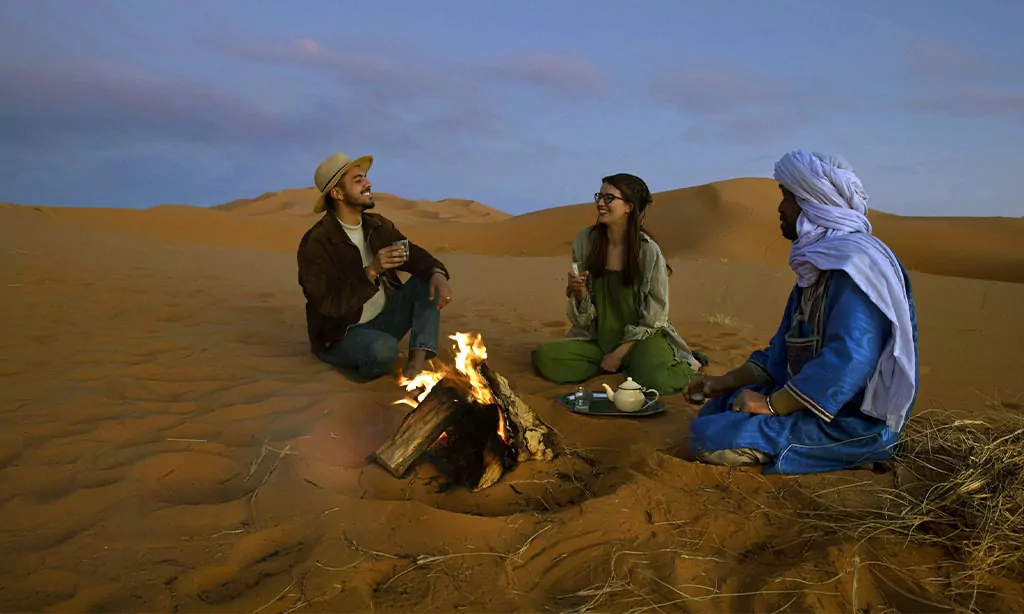
History and Heritage
Morocco’s history is a mosaic of Berber, Arab, Jewish, Roman, and European influences. The country’s imperial cities, ancient ruins, and traditional villages tell stories of centuries of conquest, trade, and coexistence.
Arts and Crafts
Moroccan craftsmanship is world-renowned:
- Carpets and Textiles: Handwoven Berber rugs, colorful fabrics, and intricate embroidery.
- Ceramics and Pottery: Distinctive geometric patterns and bold colors.
- Jewelry and Metalwork: Silver, gold, and copper pieces, often with Amazigh (Berber) motifs.
Religion and Everyday Life
Islam shapes daily life in Morocco, from the calls to prayer echoing across cities to the rhythm of Ramadan and local festivals. Visitors are welcomed with warmth and respect, and hospitality is a cornerstone of Moroccan culture.
Beaches and Coastlines: Morocco’s Hidden Seaside Paradise
Morocco’s 2,000 km of coastline offers something for every traveler:
- Essaouira: Windswept beaches, historic medina, and vibrant fishing port.
- Agadir: Modern resorts, family-friendly amenities, and water sports.
- Legzira Beach: Dramatic red rock arches and stunning sunsets.
- Mediterranean Coast: Quiet coves, charming towns, and laid-back vibes.
Adventure and Ecotourism: Why Travel to Morocco for Outdoor Thrills
Morocco is a playground for adventure seekers:
- Trekking: Atlas and Rif Mountains, with trails for all levels.
- Desert Safaris: Camel rides, quad biking, and sandboarding in the Sahara.
- Mountain Biking and Horse Riding: Scenic routes through valleys and oases.
- Birdwatching and Wildlife: National parks and nature reserves.
Eco-lodges and community-based tourism initiatives help preserve Morocco’s natural beauty and support local economies.
Modern Morocco: Innovation Meets Tradition
Morocco is rapidly modernizing its tourism infrastructure:
- High-speed trains connect major cities, making travel efficient.
- 5G internet and smart information centers enhance the visitor experience.
- New attractions include digital museums, eco-lodges, and immersive desert experiences.
Major events like the Africa Cup of Nations (2025) and the 2030 FIFA World Cup (co-hosted) are set to attract even more global attention.
Safety, Practical Tips, and Responsible Travel
Safety
Morocco is considered safe for tourists, with a strong police presence in major cities and tourist areas. Travelers should exercise standard precautions, respect local customs, and stay informed about travel advisories.
Practical Tips
- Dress Modestly: Especially in rural and religious areas.
- Language: Arabic and Berber are official; French is widely spoken, and English is common in tourist zones.
- Currency: Moroccan dirham (MAD); cash is preferred in markets.
- Tipping: Customary in restaurants and for services.
- Connectivity: SIM cards and Wi-Fi are widely available.
Sustainable and Responsible Travel
Support local communities by:
- Staying in locally owned riads and eco-lodges.
- Buying handicrafts directly from artisans.
- Participating in community-led tours and experiences.
Why Travel to Morocco? The Ultimate Checklist
Here’s a summary table of what makes Morocco irresistible:
| Reason | Highlights |
| Diverse Landscapes | Sahara Desert, Atlas Mountains, Mediterranean and Atlantic coasts |
| Rich History & Heritage | Imperial cities, Roman ruins, UNESCO sites |
| Vibrant Culture | Music, festivals, crafts, and daily life |
| World-Class Cuisine | Tagine, couscous, street food, mint tea |
| Adventure Opportunities | Trekking, surfing, desert safaris, wildlife |
| Warm Hospitality | Friendly locals, immersive experiences |
| Affordable Travel | Options for every budget, from backpackers to luxury |
| Modern Infrastructure | High-speed trains, digital services, new attractions |
| Year-Round Destination | Four seasons, with events and activities all year |
| Sustainable Tourism | Eco-lodges, community projects, responsible travel |
SEO Optimization: Why Travel to Morocco Is the Keyword for Your Next Journey
For those searching online, “why travel to Morocco” is more than a question—it’s a gateway to discovery. This guide incorporates the main keyword naturally and frequently, ensuring it ranks well for travelers seeking comprehensive, authoritative, and up-to-date information on Morocco’s attractions, culture, and travel tips.
Takeaways
Why travel to Morocco? The answer is woven into every alleyway of its medinas, every grain of sand in the Sahara, and every smile from a welcoming local. Morocco is a land of contrasts and connections, where ancient heritage meets modern innovation, and every journey promises new discoveries. With its booming tourism, world-class attractions, and a commitment to sustainable and authentic experiences, Morocco stands as Africa’s crown jewel for travelers of every kind.
Whether you’re planning your first visit or returning for another adventure, Morocco’s magic awaits. Let this guide be your compass as you embark on a journey that will fill your senses, broaden your horizons, and create memories to last a lifetime. This is why travel to Morocco is not just a trip—it’s the adventure of a lifetime.


